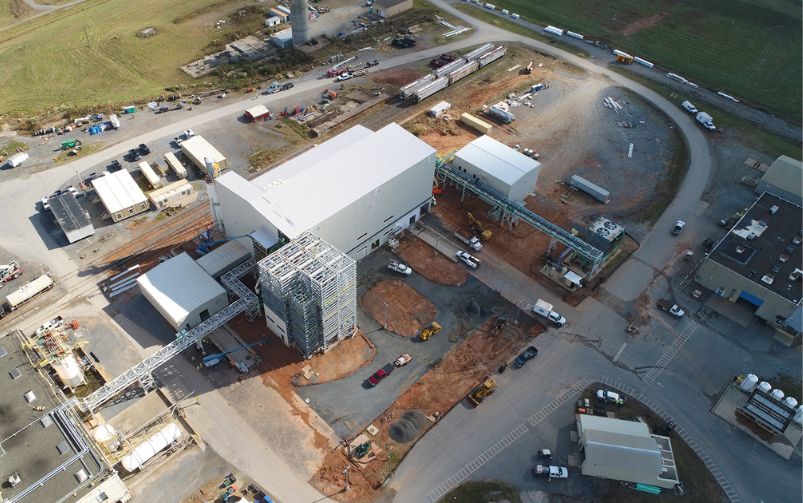The KPI-COSMO Stochastic Mining Optimizer focuses on geostatistically modelling ore bodies. Courtesy of COSMO
KPI Mining Solutions and the COSMO Stochastic Mine Planning Laboratory at McGill University released the KPI-COSMO Stochastic Mining Optimizer in January. The product is the first in their planned suite of stochastic optimization software solutions for mining companies.
The COSMO Stochastic Mine Planning Laboratory is a collaborative mining engineering lab based at McGill University in Montreal with a focus on geostatistically modelling ore bodies, quantifying mineral deposit uncertainty and variability and the optimization of mining complexes from the point of extraction down the value chain to the sale of the mineral products. Launched in 2006, the COSMO lab collaborates with a consortium of major mining companies including AngloGold Ashanti, BHP, Iamgold, Newmont and Vale.
The KPI-COSMO Stochastic Mining Optimizer is the first commercialized product from the lab. The software is currently for open-pit operations, with underground mining methods and operations to be incorporated in future versions. The solution has already been tested multiple times by the members of the consortium in real case studies. Newmont trialled stochastic mine planning in 2016 at its Twin Creeks mine in Nevada to test the feasibility of this method in a real-world scenario. The outcomes demonstrated higher net present value (NPV), higher recovered gold and lower risk profiles.
COSMO director Roussos Dimitrakopoulos said in the press release for the launch that McGill and the consortium of mining companies had selected KPI Mining Solutions, a subsidiary of Montreal-based business and technology consulting firm KPI Digital, to develop and globally commercialize the KPI-COSMO Stochastic Mining Optimizer because of its experience in artificial intelligence, optimization and software development.
The software is designed to integrate multiple simulations of the mineral deposits, as well as uncertain variables such as future pricing, in order to simultaneously optimize the whole mineral value chain. The result is a much more accurate mine production schedule, which leads to higher NPV and adheres more closely to production and financial forecasts.
Improved optimization
Deterministic optimization models require and assume that all input parameters are considered certain and are represented by a given constant. Consequently, they generate results that are equally inflexible and, given that market, mineral deposit properties and mining conditions are variable and uncertain, are inevitably inaccurate. Stochastic models, in contrast, account for the uncertainty of the related input parameters, such as mineral deposit ore quantities and grades, commodity prices and equipment availability, which are all variable. Stochastic modelling is well established in other industries for problems like inventory, finance, insurance and transportation.
The KPI-COSMO Stochastic Mining Optimizer is a “paradigm shift,” said Benny Cohen, president and CEO of KPI Mining Solutions. He told CIM Magazine, “it is an innovative technology and I believe that it’s going to address a lot of the challenges that mining companies are facing today.”
Most conventional mine planning software uses a deterministic approach, creating schedules that are constrained by pre-determined pit limits and pushbacks. However, this new software generates scheduling-driven pit limits that can be up to 25 per cent larger than what a deterministic mine planning algorithm would create.
“The conventional way of representing what is in the ground, what we call block models, has been done for decades,” said Dimitrakopoulos. “Typically, they estimate the grade of mining blocks. Estimation gives you the best average value for each block, which means that you never see the high end and the low end of what the grade of a block and a combination of blocks in the mineral deposits are. The conventional models smooth things out. Even with the same pits, you will get more metal and higher value [with this software], starting from the way that the deposits are represented, plus the scheduling and the planning you do with optimization.”
The software provides a mine planning approach that leads to significant improvements in value, according to Cohen. “What we’ve seen so far is anywhere from a five to 40 per cent increase in NPV, depending on the mining complex and depending on the areas that we can actually improve,” he said. “The multiple simulations coming in provide us with an improved model of variability as well as a more accurate way to quantify uncertainty. Thus, we’re able to come up with a better plan as well as improved visibility of the mineral value chain.”
The flexibility of the stochastic approach is another advantage. For example, if a mine contains more than one commodity and the price for a particular metal increases, the user can adapt the mine plan to focus on that, Dimitrakopoulos said.
Edson Ribeiro, exploration and mineral projects lead at Vale, said stochastic optimization was a “breakthrough” in the way mining companies assess their production risks, adding that the software gives companies the ability to better predict fluctuations in grade, tonnage and recoveries.
“With this solution, mining companies will finally be able to apply these algorithms in full-scale, real-life operations and projects, starting a new era of mine planning,” he said. “Our expectation is to increase total value in several ways, such as optimizing investments in additional drilling, equipment acquisition and allocation, stabilization of the production chain and better financial management.”
Marcelo Godoy, chief technology officer at AngloGold Ashanti, said he expects a considerable amount of value will be unlocked through the adoption of this technology. “Stochastic planning can explicitly account for uncertainties that traditional mine planning methodologies simply can’t handle. The market volatility we have been experiencing over the last few years is huge, and it becomes very difficult, if not impossible, for mining companies to develop predictable business plans,” he said. “The KPI-COSMO Stochastic Mining Optimizer allows us to account for uncertainties on commodity prices, capital and operating costs, productivity metrics and for all sorts of discrete events, like supply chain disruptions, that didn’t previously happen at the frequency we are seeing today.”
Godoy said that in addition to maximizing economic returns, the stochastic optimizer allows mining companies to develop business plans that minimize the risk of deviating from production forecasts. “This ability is the real leap we are expecting to see with the application of this technology.”
COSMO and KPI Mining Solutions intend to continue developing software solutions for all stages of open-pit and underground mine planning, including medium- and short-term operational planning.




